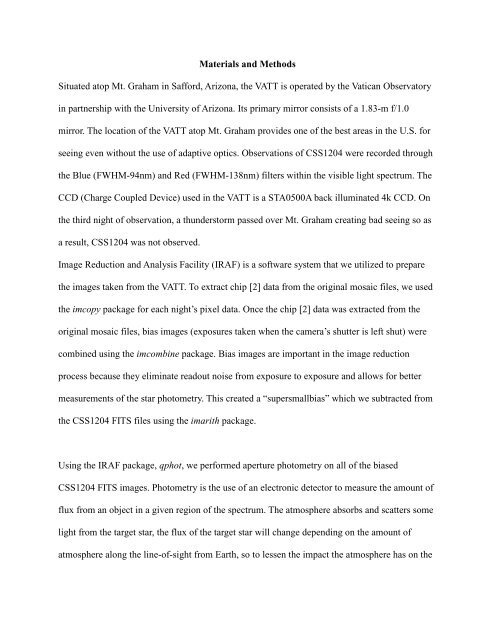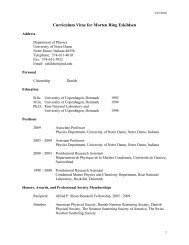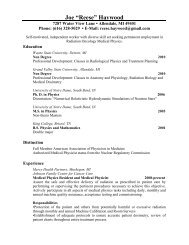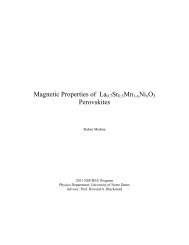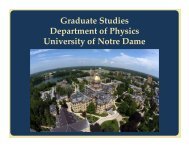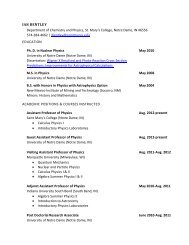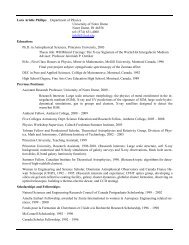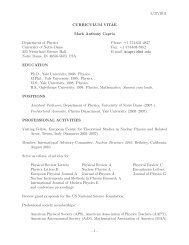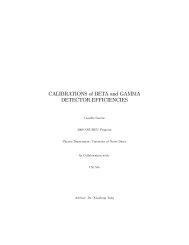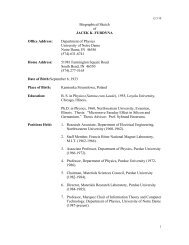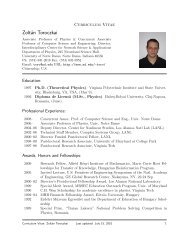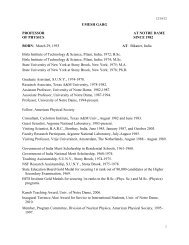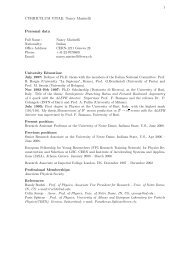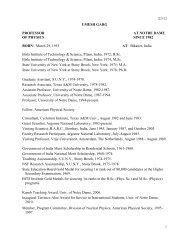Determining the Orbital Period of the Cataclysmic Variable ...
Determining the Orbital Period of the Cataclysmic Variable ...
Determining the Orbital Period of the Cataclysmic Variable ...
Create successful ePaper yourself
Turn your PDF publications into a flip-book with our unique Google optimized e-Paper software.
Materials and Methods<br />
Situated atop Mt. Graham in Safford, Arizona, <strong>the</strong> VATT is operated by <strong>the</strong> Vatican Observatory<br />
in partnership with <strong>the</strong> University <strong>of</strong> Arizona. Its primary mirror consists <strong>of</strong> a 1.83-m f/1.0<br />
mirror. The location <strong>of</strong> <strong>the</strong> VATT atop Mt. Graham provides one <strong>of</strong> <strong>the</strong> best areas in <strong>the</strong> U.S. for<br />
seeing even without <strong>the</strong> use <strong>of</strong> adaptive optics. Observations <strong>of</strong> CSS1204 were recorded through<br />
<strong>the</strong> Blue (FWHM-94nm) and Red (FWHM-138nm) filters within <strong>the</strong> visible light spectrum. The<br />
CCD (Charge Coupled Device) used in <strong>the</strong> VATT is a STA0500A back illuminated 4k CCD. On<br />
<strong>the</strong> third night <strong>of</strong> observation, a thunderstorm passed over Mt. Graham creating bad seeing so as<br />
a result, CSS1204 was not observed.<br />
Image Reduction and Analysis Facility (IRAF) is a s<strong>of</strong>tware system that we utilized to prepare<br />
<strong>the</strong> images taken from <strong>the</strong> VATT. To extract chip [2] data from <strong>the</strong> original mosaic files, we used<br />
<strong>the</strong> imcopy package for each night’s pixel data. Once <strong>the</strong> chip [2] data was extracted from <strong>the</strong><br />
original mosaic files, bias images (exposures taken when <strong>the</strong> camera’s shutter is left shut) were<br />
combined using <strong>the</strong> imcombine package. Bias images are important in <strong>the</strong> image reduction<br />
process because <strong>the</strong>y eliminate readout noise from exposure to exposure and allows for better<br />
measurements <strong>of</strong> <strong>the</strong> star photometry. This created a “supersmallbias” which we subtracted from<br />
<strong>the</strong> CSS1204 FITS files using <strong>the</strong> imarith package.<br />
Using <strong>the</strong> IRAF package, qphot, we performed aperture photometry on all <strong>of</strong> <strong>the</strong> biased<br />
CSS1204 FITS images. Photometry is <strong>the</strong> use <strong>of</strong> an electronic detector to measure <strong>the</strong> amount <strong>of</strong><br />
flux from an object in a given region <strong>of</strong> <strong>the</strong> spectrum. The atmosphere absorbs and scatters some<br />
light from <strong>the</strong> target star, <strong>the</strong> flux <strong>of</strong> <strong>the</strong> target star will change depending on <strong>the</strong> amount <strong>of</strong><br />
atmosphere along <strong>the</strong> line-<strong>of</strong>-sight from Earth, so to lessen <strong>the</strong> impact <strong>the</strong> atmosphere has on <strong>the</strong>


